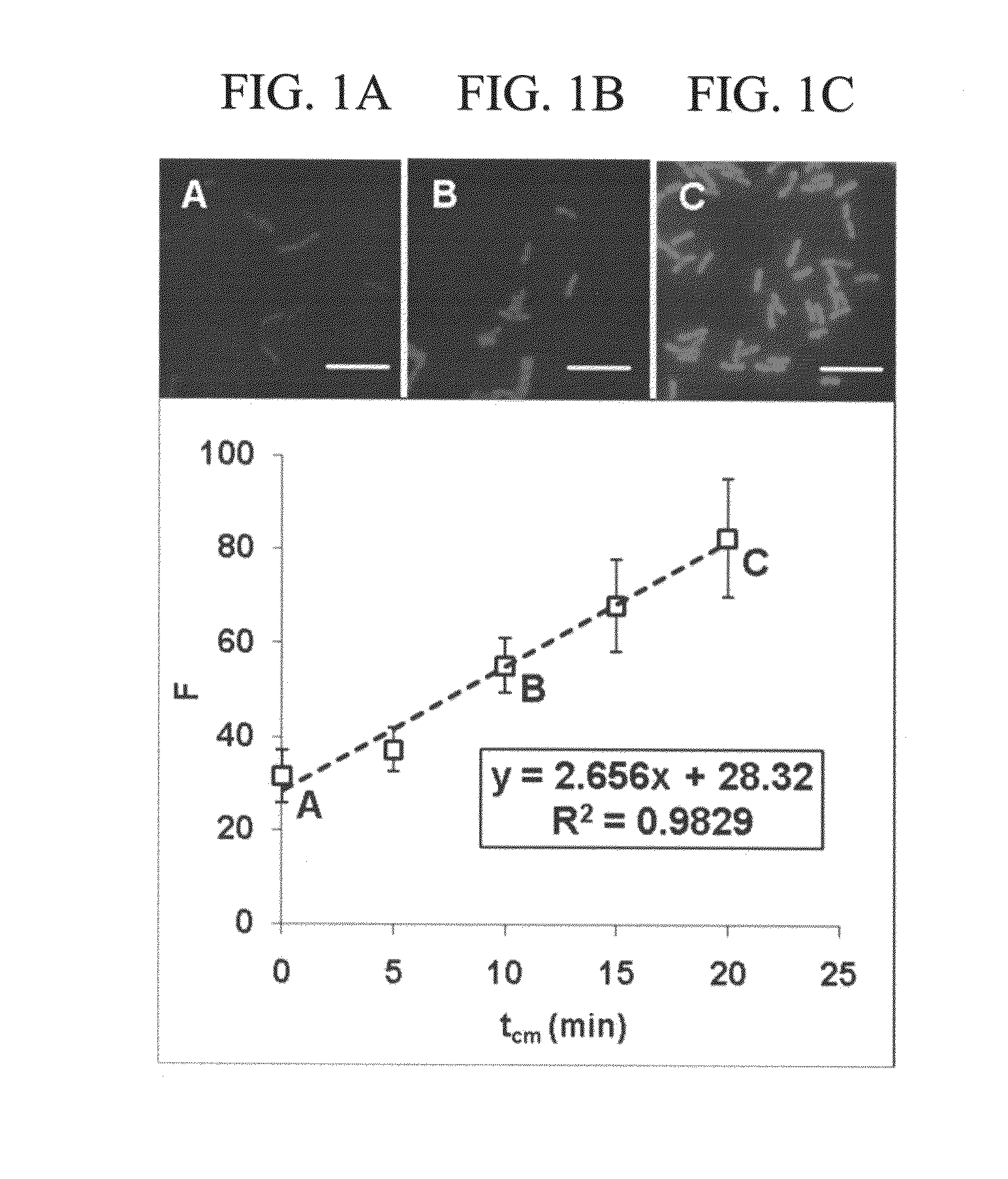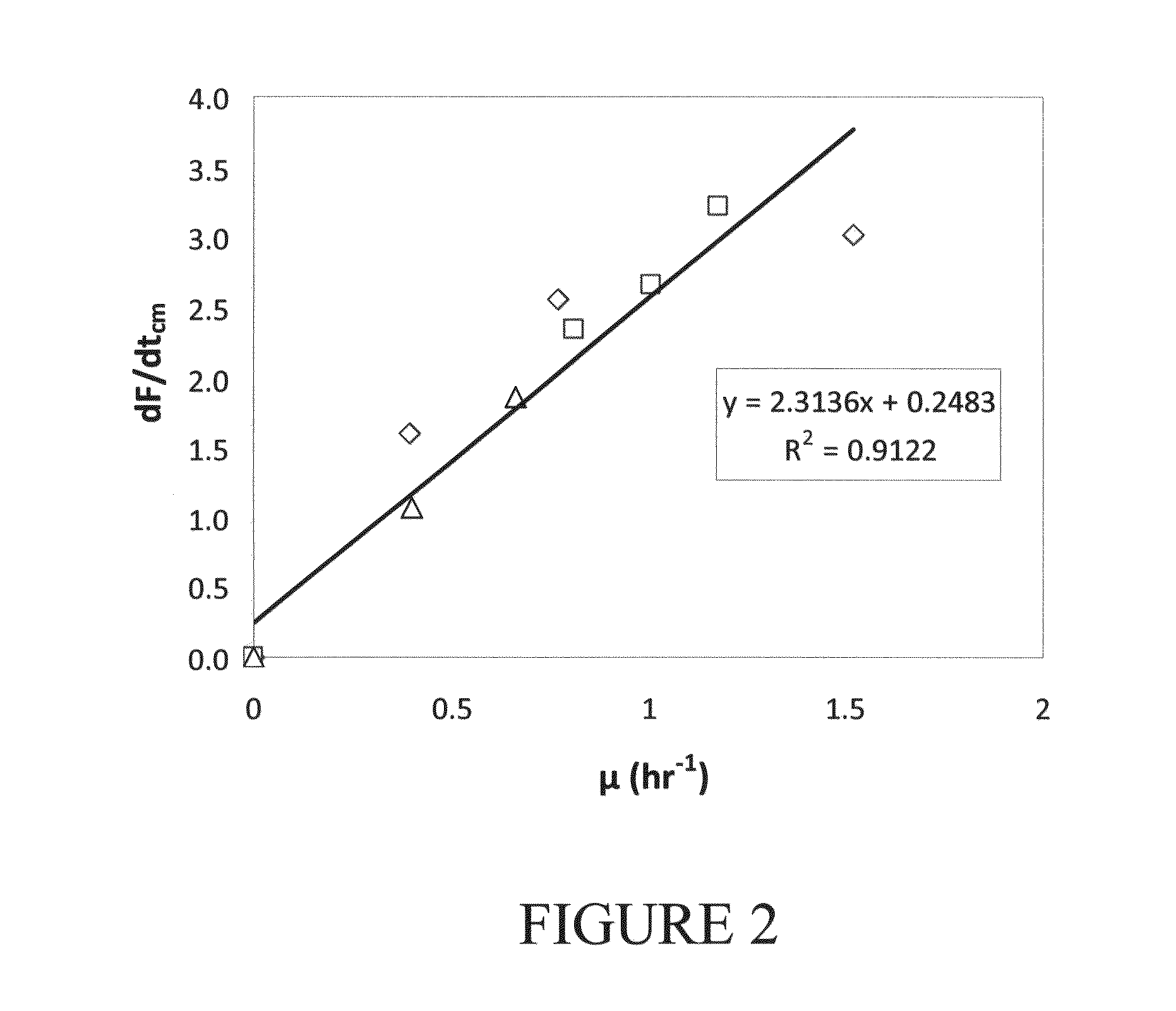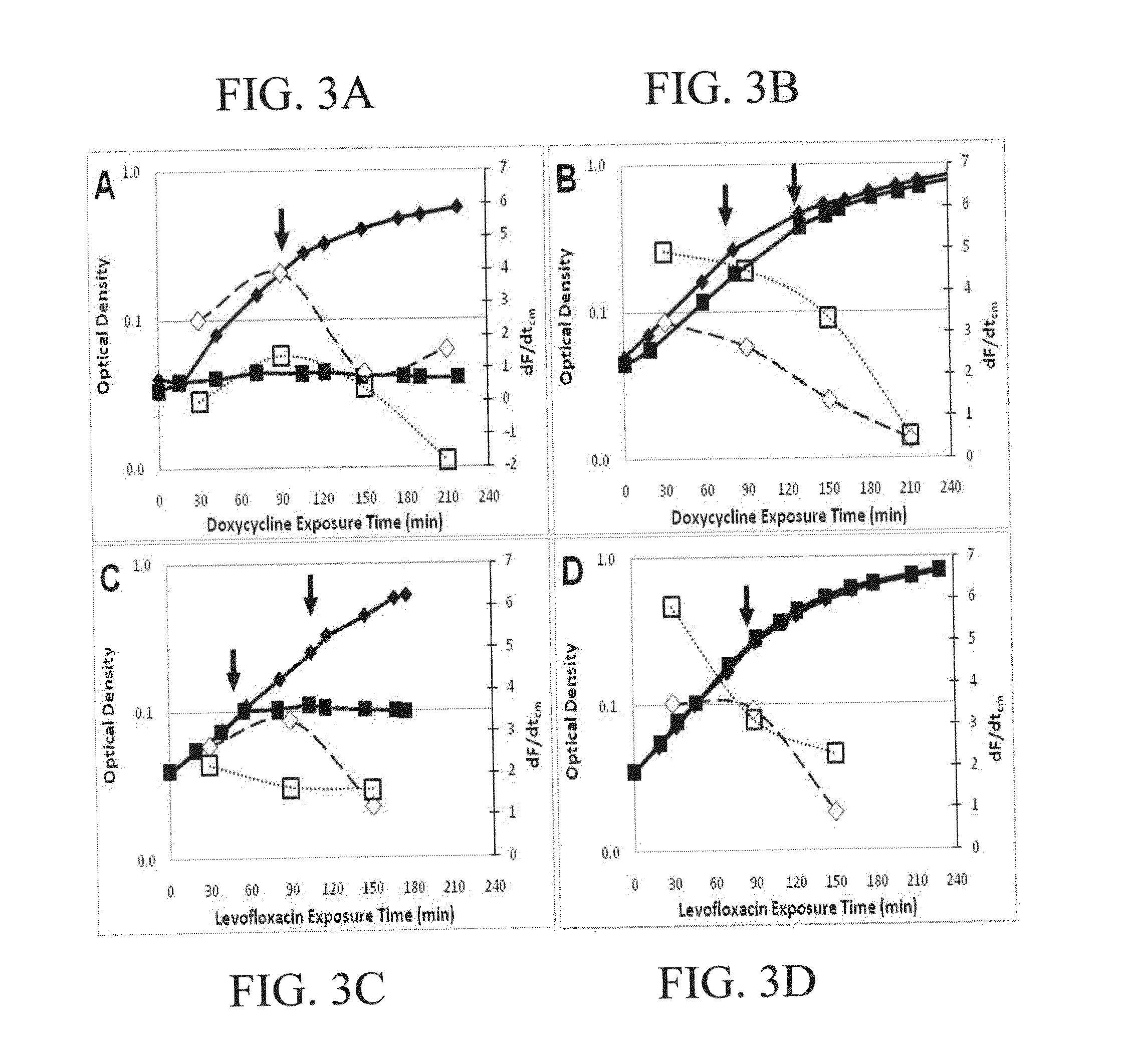Fish-ribosyn for antibiotic susceptibility testing
a technology of susceptibility testing and fish ribosomes, which is applied in the direction of microbiological testing/measurement, biochemistry apparatus and processes, etc., can solve the problems of increasing patient mortality, cancer patients undergoing chemotherapy at great risk of infection, and increasing the risk of antibiotic resistant bacteria in the patient's long-term carrier, etc., to achieve rapid and inexpensive screening procedures, and measure the rate of ribosome synthesis
- Summary
- Abstract
- Description
- Claims
- Application Information
AI Technical Summary
Benefits of technology
Problems solved by technology
Method used
Image
Examples
experiment ii
sceptibility Testing
[0108]To test the effects of the antibiotic doxycycline, doxycycline (Fisher Scientific) stock solution (1 mg / mL) was added to 100-mL of fresh, sterile nutrient broth for a final concentration of 8 μg / mL. A sample from an actively growing culture (10 mL) was added to the doxycycline / nutrient broth for a final volume of 110 mL. The aforementioned transfers were performed for both the resistant strain A. baumannii CBD1311 (OD=0.378) and a susceptible strain A. baumanniiT (OD=0.324). This procedure was repeated to test the effects of the antibiotic levofloxacin by adding levofloxacin (Sigma-Aldrich) stock solution (1 mg / mL) to 100-mL of fresh, sterile nutrient broth for a final levofloxacin concentration of 2 μg / mL. Transfers were performed for A. baumannii CBD1311 (OD=0.338) and A. baumanniiT (OD=0.365) and the dilutions were sufficient to ensure that the culture was below a McFarland standard of 0.5. Additionally, controls were implemented for each transfer where ...
example 1
EVALUATION OF RIBOSOME SYNTHESIS IN ACINETOBACTER SPP
[0116]For each actively growing Acinetobacter culture, a linear increase in mean whole cell fluorescence intensity over the duration of chloramphenicol exposure was observed as shown in FIGS. 1A-1C. The initial, weak fluorescent signal (FIG. 1A) is due to the low steady state concentration of pre16S-rRNA, which is typical of healthy growing cells (Licht et al. (1999)). As chloramphenicol begins to inhibit secondary rRNA processing, a buildup of cellular pre16S-rRNA occurs and is directly observed as an increase in mean whole cell fluorescence (FIGS. 1B and 1C) (Oerther et al. (2000a)). A strong linear correlation between F and tcm is observed, however the variance increases with higher mean whole cell fluorescence. This increase in variance is the result of the greater difference between the fluorescence of the pixels near the center of the object (cell) and at the edge of the object for brighter objects. An outline of the growth ...
example 2
ANTIBIOTIC SUSCEPTIBILITY TESTING
[0119]The FISH-RiboSyn method was used to evaluate antibiotic susceptibility and resistance in A. baumannii strains for two antibiotics: doxycycline, a bactericidal protein synthesis inhibitor; and levofloxacin, a bacteriostatic DNA replication disruptor. For each antibiotic, a susceptible strain, A. baumanniiT, and resistant strain, A. baumannii CBD1311, was treated with the antibiotic and dF / dtcm was determined at various antibiotic exposure times and compared to its respective control (i.e., untreated culture). For susceptible cultures (FIGS. 3A and 3C), the OD data clearly portrays the antibiotic effect of the treated cells while untreated cells remain unaffected. The doxycycline immediately suppressed growth of the susceptible strain, while treatment with levofloxacin exhibited a 60 minute delay before cessation of growth. In contrast, the resistant and control cultures have nearly identical growth profiles, although there does appear to be a ve...
PUM
| Property | Measurement | Unit |
|---|---|---|
| Electrical conductance | aaaaa | aaaaa |
| Fraction | aaaaa | aaaaa |
| Fraction | aaaaa | aaaaa |
Abstract
Description
Claims
Application Information
 Login to View More
Login to View More - R&D
- Intellectual Property
- Life Sciences
- Materials
- Tech Scout
- Unparalleled Data Quality
- Higher Quality Content
- 60% Fewer Hallucinations
Browse by: Latest US Patents, China's latest patents, Technical Efficacy Thesaurus, Application Domain, Technology Topic, Popular Technical Reports.
© 2025 PatSnap. All rights reserved.Legal|Privacy policy|Modern Slavery Act Transparency Statement|Sitemap|About US| Contact US: help@patsnap.com



